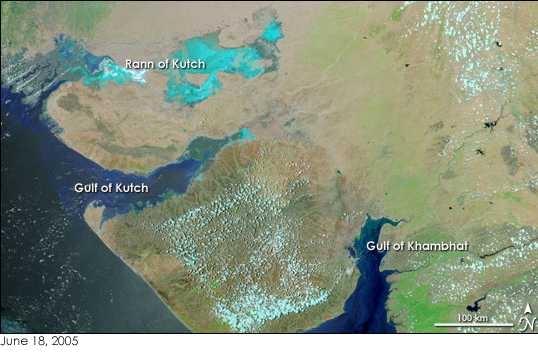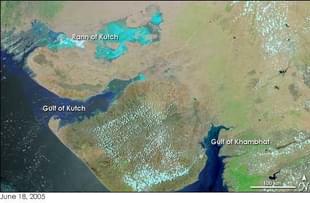Commentary
Agriculture has been Gujarat’s outstanding story
Amit Malviya
May 06, 2012, 03:09 PM | Updated Apr 29, 2016, 02:25 PM IST
Save & read from anywhere!
Bookmark stories for easy access on any device or the Swarajya app.


The 12th Five Year Plan (2012-17) of Planning Commission has projected agriculture, a sector that engages almost 60% of India’s population, to grow at 4%. An economy that must grow at 9% plus to help its poor live a better life cannot afford to ignore the sector. Policy makers world over realize that moving people from slow growth sectors to fast growth sectors like manufacturing and services is natural and desirable but not at the cost of neglecting agriculture. A lagging agriculture sector will only result in greater inequality.
You would then ask if manufacturing and services sector growing fast enough to absorb those who want to move away from agriculture? The answer is NO but that is a separate debate altogether. It would suffice to say that managing an economy is not a patch work – a reform here and there won’t deliver the growth we need. It requires a great deal of vision and several initiatives being implemented at the same time.
Let us now look at the headlines in past months:
Five Vidarbha farmers kill self; 332 suicides this year or West Bengal farmer commits suicide after failing to repay loan or Every 12 hours, one farmer commits suicide in India. I could go on and the list won’t end. In a recent case farmers have directly blamed the Government in power for the agrarian crisis and their death (Vidarbha farmer in suicide note: Don’t vote for Cong, NCP).
Farmer suicides are not a recent phenomenon. They are being reported since early 1990s. Several public commentators and agriculture economists have written about the issue. However the crisis has only deepened. Between 1995-2002, over a quarter of a million farm suicide cases have been reported. These numbers on a stand-alone basis don’t convey much but on an absolute basis they do point to something not being quite right.
P Sainath, one of the more vocal commentators, espousing the cause of farmer’s points to systemic failure of the State to provide an enabling environment, which has resulted in the agrarian crisis. Rising input costs, inadequate irrigation facility, overt dependence on rain, lack of information on modern methods and technologies, no counseling for farmers on crop rotation, soil management and rain water harvesting, erratic power supply, broken supply chain, poor storage, lack of credit and inconsistent policy framework are some of the reasons cited for the deteriorating condition of the farmers.
Much as I agree with P Sainath’s prognosis, I can’t get myself to agree with his solutions, if there are any. His loathing for corporate sector and the alleged inequality as a result of reforms, which has been demolished here, is no solution. If addressing a complex issue of access and information could be solved by all of us falling to the same level of poverty, world would have been an egalitarian place by now. To redistribute one has to create !
As Gujarat launches its annual Krishi Mahotsav, it is perhaps an opportune time to understand the State’s integrated approach to agriculture better. Over the last decade agriculture in Gujarat has seen a 10% growth. This is because systematic effort has been made to nurture an ecosystem that facilitated this kind of growth – scientific farming, rain water harvesting and linking of rivers (under Sujalam Sufalam initiative – to create water grids for conservation and proper utilization). Agricultural income has increased from Rs 90bn in 2002 to Rs 500bn in 2010. Linking rivers and making check dams resulted in increased ground water level, which meant drop in usage of electricity for agricultural purposes to 22% (from 45% earlier). This is a state that was arid and drought-prone before Mr. Narendra Modi took over and now is exporting cotton, and vegetables like okra and tomatoes. Yield of food grains in Gujarat has gone up to 1581 kgs/hectare (in FY 09-10) from 1186 kgs/hectare (in FY 99-00).
So what did Gujarat Government do differently?
The State Government conceptualized a month long farmer out-reach program called Krishi Mahotsav or Farm Fairs. It was unique because the Government ensured that it brought various farm related services and technical know-how to the farmer’s door step rather than the other way round. For this, during the month long period, mobile agricultural units carrying experts and service providers reached out to farmers small and big. Soil health checks, counseling farmers on the crops to grow, inputs to optimize farm production and control costs were some of the key areas covered. There has been a concerted effort to promote rain water harvesting, drip irrigation and introducing new agricultural technology.
Unconventional initiatives such as digging community ponds, making numerous small and big check dams to hold water were encouraged. This not only helped with irrigation but also replenished the ground water table resulting in lower consumption of electricity. The State Government under the Jyotigram scheme provided a dedicated feeder line ensuring assured power supply to the farm sector. It would be pertinent to point out that Gujarat doesn’t provide free electricity to its farmers unlike other States, yet its farm output is better. This could well be the reason why farmers are less wasteful of resources.
These initiatives may not be as glamorous as the Vibrant Gujarat summit or the news of big MNCs driving into Sanand but the quiet green revolution has pushed Gujarat’s growth to a higher trajectory. Gujarat stands out for its long term vision and impeccable execution. Governance is not just about lofty speeches and promises but actual delivery.
Clearly, there is much that various State Governments and farmers from the rest of India can learn to improve productivity, output and incomes. If India follows Gujarat, 10% growth should be possible!
Amit Malviya is a senior banker and an early stage investor. He is interested in politics and economics.





